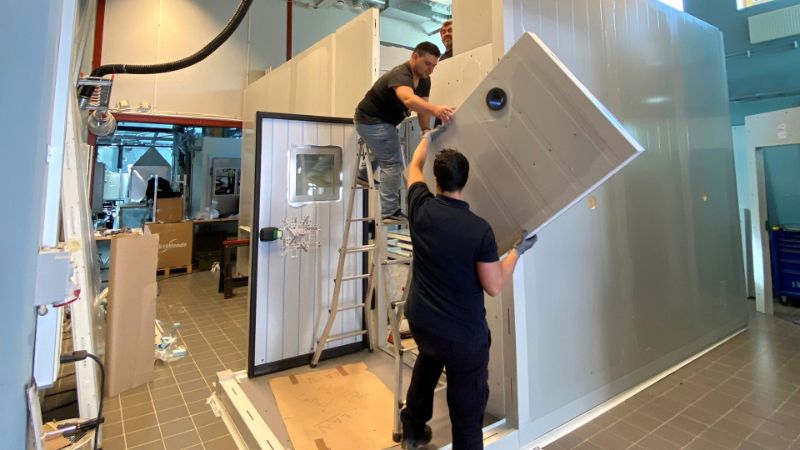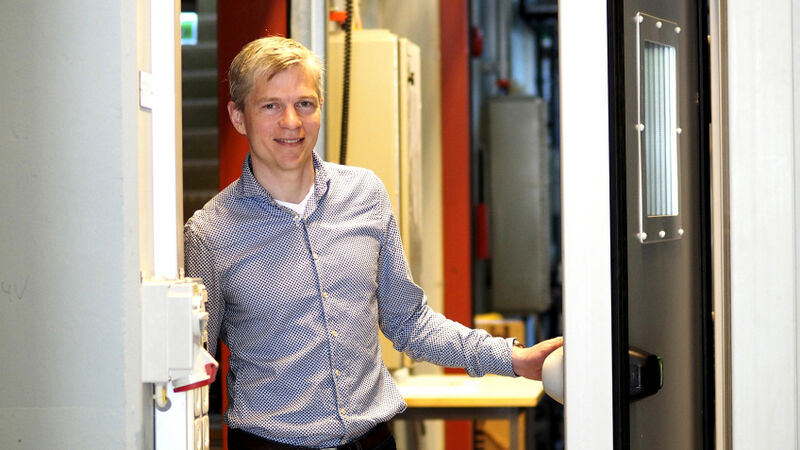Unique combo lab paves the way for new research breakthroughs
After a trip from Portugal, the new exposure chambers have arrived in Lund. LTH’s aerosol and climate scientists welcome the lab delivery with great expectations and are getting ready for a four-week construction project.
Jessika Sellergren – Published 2 June 2022

Several years of preparation are now bearing fruit. The aerosol and climate labs at LTH have merged into one laboratory, and in the process the infrastructure is being improved with two research chambers – one for heating and one for cooling. The chambers enable combined particle and climate studies, something that was previously only possible for each on its own.
“We do not know of any other facility that combines aerosols, and advanced climate and measurement technology in the same way as in our lab. The new chambers provide us with unique tools for future research on climate, atmosphere, air pollution, product testing and much more,” according to Jakob Löndahl.
He is an associate professor of aerosol technology and director of the lab. He monitors the emergence of the chambers every day and looks forward to being able to answer more research questions soon – questions that could not have been answered without the new exposure chambers.

The questions waiting for answers are many. How are humans affected by different types of climates? How is viral infection spread through the air in different temperatures and humidity? How does the body react to air pollution when the climate changes?
Jakob Löndahl predicts that the new lab chambers will have a great significance for the University's research, but also for external partners who need to test their ideas and products.
“Our previous aerosol and climate chambers have generated a lot of research opportunities. In a combined lab with the new exposure chambers, the level of research can be further elevated,” he states.
About the Aerosol and Climate Laboratory
How human health is affected by different particles is examined in the laboratory. The studies in the new exposure chambers can be carried out at a high level of purity, under effective control of air flows, in varying levels of humidity, and in temperatures from -25 to +50 ⁰C. The research participants are exposed to small amounts of the aerosols – such as soot from combustion, candles or cooking – in amounts that are comparable to those we are exposed to in our daily lives. Several health parameters, such as inflammation markers and cardiac activity, are studied at the same time.
The laboratory is used by the Aerosol and Climate Group in the Division of Ergonomics and Aerosol Technology, by the Aerosol Group in the Division of Nuclear Physics, and other users in LTH and the Faculty of Medicine. The lab is part of LTH Open Door and can thus be used by external actors as well.
